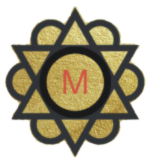
Tarot journaling serves as a powerful tool for individuals seeking to deepen their understanding of tarot and enhance their personal growth. At its core, tarot journaling is about creating a dedicated space to document insights, interpretations, and experiences related to tarot readings. This practice allows users to track their emotional and spiritual journeys, providing a tangible record of their evolving relationship with the cards.
By writing down thoughts and feelings associated with each reading, practitioners can uncover patterns, themes, and recurring symbols that may not be immediately apparent during the reading itself. Moreover, tarot journaling fosters a sense of accountability and commitment to the practice. When individuals take the time to write about their readings, they engage more deeply with the material, encouraging a reflective mindset.
This process can lead to greater clarity regarding personal questions or dilemmas, as well as a more profound connection to the intuitive aspects of tarot. The act of journaling transforms tarot from a mere divination tool into a comprehensive system for self-exploration and understanding, allowing practitioners to navigate their inner landscapes with greater ease.
Key Takeaways
- Tarot journaling helps to track and reflect on your tarot readings, leading to personal growth and self-discovery.
- Setting up a tarot journal involves choosing a journal or notebook, creating sections for different purposes, and gathering necessary tools like tarot cards and writing materials.
- Tracking your tarot readings involves recording the date, time, question or intention, cards drawn, and any significant insights or feelings during the reading.
- Reflecting on your readings involves revisiting past entries, identifying patterns or recurring themes, and gaining deeper insights into the messages of the cards.
- Tarot journaling can be used for personal growth by setting intentions, exploring emotions, and gaining clarity and understanding in various aspects of life.
- Consistent tarot journaling can be achieved by setting a regular schedule, finding a comfortable and quiet space, and staying open-minded and non-judgmental during the process.
Setting Up Your Tarot Journal
Creating a tarot journal is an exciting endeavor that can be tailored to fit individual preferences and styles. The first step in setting up a tarot journal is selecting the medium that resonates most with you. Some may prefer a traditional paper journal, where they can express their thoughts freely with pen and ink, while others might opt for a digital format, utilizing apps or word processors for convenience and organization.
Regardless of the medium chosen, it is essential to create an inviting space that encourages regular use and reflection. Once the medium is established, consider organizing the journal in a way that makes it easy to navigate. Many practitioners choose to divide their journals into sections based on themes, such as daily draws, specific spreads, or personal reflections.
Others may prefer a chronological approach, documenting each reading in the order it occurs. Including prompts or questions at the beginning of each entry can also be beneficial, guiding the writer’s thoughts and ensuring that they delve into the nuances of each reading. Additionally, incorporating visual elements such as sketches of cards or collages can enhance the creative aspect of journaling, making it a more engaging experience.
Tracking Your Tarot Readings

Tracking tarot readings is a fundamental aspect of tarot journaling that allows practitioners to observe their growth over time. Each entry should include essential details such as the date of the reading, the question posed, the spread used, and the cards drawn. This information serves as a reference point for future reflections and helps establish a timeline of personal development.
By consistently documenting these elements, individuals can identify trends in their readings and gain insights into how their circumstances or perspectives may have shifted. In addition to recording basic details, it is crucial to capture the emotions and thoughts that arise during each reading. This might include immediate reactions to specific cards or feelings about the overall message conveyed by the spread.
By articulating these responses, practitioners can create a richer narrative around their experiences with tarot. Over time, reviewing past entries can reveal how interpretations have evolved or how certain cards have taken on new meanings in different contexts. This ongoing dialogue between the reader and their journal fosters a deeper understanding of both the tarot and oneself.
Reflecting on Your Readings
Reflection is a vital component of tarot journaling that allows individuals to process their readings on a deeper level. After documenting a reading, taking time to revisit and analyze the entry can yield valuable insights. This reflective practice encourages practitioners to consider how the messages from the cards resonate with their current life situations or emotional states.
It also provides an opportunity to explore any discrepancies between initial interpretations and subsequent realizations that may arise as time passes. Engaging in reflection can take various forms; some may prefer free writing, while others might find structured prompts helpful. Questions such as “What did I learn from this reading?” or “How does this message apply to my life right now?” can guide reflections and encourage deeper exploration of themes presented in the cards.
Additionally, reflecting on how previous readings have played out in real life can enhance understanding of tarot’s predictive capabilities and its role in personal decision-making processes. This ongoing cycle of reflection not only enriches the journaling experience but also cultivates a more profound connection with one’s intuition.
Using Tarot Journaling for Personal Growth
The transformative potential of tarot journaling lies in its ability to facilitate personal growth and self-discovery. By regularly engaging with tarot through journaling, individuals can uncover hidden aspects of themselves and confront challenges that may have previously gone unexamined. The process encourages introspection and self-awareness, allowing practitioners to identify patterns in their thoughts and behaviors that may be holding them back from achieving their goals.
By articulating specific goals or aspirations within the journal, individuals can use tarot readings as a means of exploring pathways toward those objectives. For instance, drawing cards related to career aspirations or personal relationships can provide clarity on steps needed to move forward.
This proactive approach transforms tarot from a passive tool into an active partner in one’s journey toward self-improvement.
Tips for Consistent Tarot Journaling

Establishing a consistent tarot journaling practice requires dedication and intention. One effective strategy is to set aside specific times for journaling, whether daily or weekly, creating a routine that integrates this practice into your life seamlessly. Consistency not only reinforces commitment but also allows for deeper exploration of themes as they unfold over time.
Setting reminders or creating rituals around journaling sessions can further enhance this commitment. Another helpful tip is to keep your entries concise yet meaningful. While it may be tempting to write extensively about each reading, focusing on key insights and emotions can make journaling feel less overwhelming and more manageable.
Finally, don’t hesitate to revisit past entries; reflecting on previous insights can inspire new revelations and reinforce the ongoing journey of self-discovery through tarot journaling. In conclusion, tarot journaling is an enriching practice that offers numerous benefits for personal growth and self-exploration.
By understanding its purpose, setting up an organized journal, tracking readings diligently, reflecting thoughtfully on experiences, and maintaining consistency in practice, individuals can unlock the transformative potential of tarot in their lives. Through this journey of introspection and insight, practitioners not only deepen their connection with tarot but also embark on a path toward greater self-awareness and fulfillment.
If you are interested in exploring the deeper meanings behind tarot cards, you may want to check out The Tarot Card of Death: Embracing Transformation and New Beginnings. This article delves into the symbolism and significance of the Death card in tarot readings, highlighting the themes of transformation and new beginnings. Understanding the meanings of individual tarot cards can enhance your tarot journaling practice and help you track your readings more effectively.
FAQs
What is tarot journaling?
Tarot journaling is the practice of keeping a record of your tarot readings, interpretations, and insights in a journal or notebook. It can help you track your progress, gain a deeper understanding of the cards, and reflect on your personal growth.
Why is tarot journaling important?
Tarot journaling is important because it allows you to track your readings over time, identify patterns, and gain insight into your own interpretations and intuition. It can also help you develop a deeper connection with the tarot cards and enhance your overall tarot practice.
How do you start a tarot journal?
To start a tarot journal, you can simply use a notebook or journal to record your tarot readings, interpretations, and any insights or reflections that come up during or after the reading. You can also include details such as the date, time, and any specific questions or spreads used.
What should you include in a tarot journal?
In a tarot journal, you can include details of your tarot readings, such as the cards drawn, the spread used, and any specific questions or intentions. You can also write down your interpretations, insights, and any personal reflections that arise from the reading.
How can tarot journaling help track your readings effectively?
Tarot journaling can help track your readings effectively by providing a record of your interpretations, insights, and any patterns or themes that emerge over time. It can also help you track your progress, identify areas for growth, and deepen your understanding of the tarot cards.






